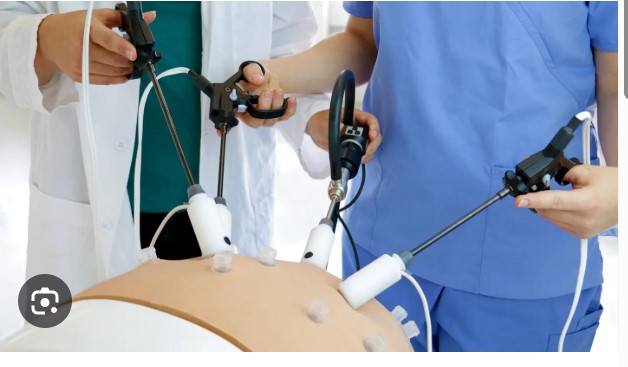Clinical education has quietly shifted from rare, theatrical simulations to frequent, focused practice that compounds into real competence. The difference isn’t just newer manikins; it’s a coherent ecosystem where physiology, devices, procedures, and debrief analytics reinforce each other every week. That’s the promise of MedVision’s approach to simulation: make everyday training believable, measurable, and scalable so schools and hospitals can raise performance without burning out faculty or budgets. If you’re mapping out a program or refreshing an existing lab, check it here—and use the blueprint below to turn equipment into outcomes.
From gadgets to a learning system
Many centers own impressive simulators but still struggle with fragmented workflows: different interfaces, inconsistent metrics, and debriefs based on recollection instead of evidence. A systems mindset fixes this by aligning three elements:
- One learning spine: micro-skills → context drills → team events → structured debrief → short refreshers.
- Shared data signals: action timestamps and scenario markers that travel across devices and rooms.
- Real-device credibility: monitors, ventilators, defibrillators, and pumps that behave like the ward or OR.
When the hardware, software, and pedagogy point in the same direction, learners progress faster—and instructors coach judgment rather than troubleshoot tech.
What “high fidelity” should mean in 2025
High fidelity isn’t loud alarms or glossy skins. It’s the chain from action to believable consequence:
- Adaptive physiology that responds in real time—oxygen stabilizes respiratory distress, fluids bend hypotension, defibrillation changes rhythm, insulin shifts a DKA trajectory.
- Action capture that logs assessments, meds, shocks, ventilator changes, ultrasound findings, and handoff steps without a stopwatch.
- Procedure realism where tactile feedback and ergonomics matter for endoscopy, laparoscopy, or vascular access—and metrics (path length, errors, time on task) turn motion into coaching.
- Team cues that force communication and role clarity under time stress, not just individual technical moves.
With those pieces in place, learners stop “playing to the room” and start thinking like clinicians.
The MedVision stack at a glance
- Patient simulators for recognition-and-response across adult, pediatric, and maternal scenarios with believable device interplay.
- Laparoscopic & endoscopic trainers (e.g., LapVision concepts) that pair credible haptics with robust analytics for dexterity and full procedures.
- Ultrasound and imaging modules that bake probe discipline and image literacy into everyday training.
- S.Vision 3D anatomy table that links structure to CT/MRI in seconds and powers case-based teaching, OSCEs, and procedure planning.
- Turnkey AV and data flows that make recording, debrief, and evidence export routine instead of heroic.
The value isn’t any single device; it’s the continuity—one interface logic, one reporting language, one service pathway.
Build your program backward from bedside behavior
List the exact behaviors you want to improve. Make each observable, time-bound, and debrief-able:
- Oxygen delivered within two minutes of recognizing hypoxemia
- First shock for shockable rhythm within 120 seconds of recognition
- Sepsis bundle sequence: cultures → antibiotic → fluids → reassessment
- Closed-loop communication at each critical step
- Complete handoff elements in under 90 seconds
If a behavior can’t be observed and time-stamped, it rarely improves at scale. Tie scenarios and checklists to these rules and let the platform capture the evidence.
A weekly learning spine that compounds
Trade rare “mega sim days” for a rhythm that respects calendars and accelerates learning:
- Micro-skills (5–15 min): mask seal, IV access, sterile field, scope navigation, knot tying, ultrasound windows, medication checks.
- Context drills (15–30 min): physiology-driven cases where interventions change the arc—COPD flare, early sepsis, post-op bleed, neonatal resuscitation.
- Team events (20–40 min): interprofessional runs with role clarity, escalation language, and device choreography in an OR/ICU/ward footprint.
- Structured debrief (8–12 min): facts first (timeline), then mental models and teamwork, ending with two “keep” and two “change” behaviors.
- Spaced refreshers (5–7 min): short follow-ups inside two weeks so insight becomes habit.
Because MedVision keeps interfaces and metrics consistent, this spine runs with little friction and high signal.
Debrief like a quality huddle, not a post-game chat
Great debriefs feel fair and focused:
- Timeline first: assessment at 02:10, oxygen at 02:40, first antibiotic at 06:05, first shock at 01:50, insulin start at 07:10, handoff at 10:30.
- Reconstruct the story: “What did you believe was happening at minute three, and what convinced you?”
- Connect action to physiology: where a timely step bent the curve—or where a delay amplified risk.
- Micro-commitments: two habits to keep, two to adjust, plus when they’ll be rehearsed next.
Objective logs reduce hindsight bias and speed adoption.
Use modalities by mission, not by marketing
Every tool earns its place by the job it does best:
- Patient simulators: early recognition, escalation, medication safety, and handoffs in adult/peds/maternal care.
- Lap/endo platforms: economy of motion, bimanual coordination, clip-and-cut precision, and full procedure flows with haptic credibility.
- Ultrasound trainers: probe discipline, anatomy in planes, and common POCUS pathways aligned to clinical questions.
- 3D anatomy table: relationships over lists, imaging alignment, and OSCE-ready stations that recycle across cohorts.
A unified ecosystem keeps the learner’s cognitive load on medicine—not on flipping mental models between devices.
Turn ordinary rooms into dependable sim suites
You don’t need a flagship center to deliver results. Convert standard spaces with choices that matter:
- Footprint: bed zone plus an equipment triangle (monitor, ventilator, airway cart) that mirrors clinical flow.
- AV simplicity: ceiling mics, one movable camera, automatic recording, dead-simple controls.
- Reset discipline: color-coded bins and a 10-minute checklist so schedules hold.
- Portability: rolling rigs to reach satellite sites and night shifts without sacrificing fidelity.
Commissioning, layout, and service from one partner minimize integration tax.
Measure fewer things—more precisely
Keep data lean, consequential, and repeatable term after term:
- Process times: first assessment, oxygen, first shock, antibiotic/vasopressor/insulin starts, escalation call, documentation.
- Bundle adherence: sepsis, hemorrhage, airway algorithms, med safety checks.
- Teamwork: closed-loop frequency, role clarity, handoff completeness.
- Learning trajectory: OSCE pass rate, remediation volume and recurrence, scenario difficulty progression.
- Operations: equipment uptime, reset time, sessions per faculty hour.
Publish a one-page dashboard; use it to steer teaching and justify resources—without creating a new job.
A 12-week rollout you can actually run
- Weeks 1–2: choose five bedside behaviors; author scenario shells and checklists.
- Weeks 3–4: convert a room; validate audio/video/auto-record.
- Weeks 5–6: commission simulators; connect real devices; verify action logging; train two super-users.
- Weeks 7–8: pilot with small cohorts; refine cues and debrief scripts.
- Weeks 9–10: faculty workshops on coaching language and human factors.
- Weeks 11–12: go live; embed micro-reps; publish your baseline dashboard.
Aim for rhythm, not spectacle. Reliability beats rarity.
Protect uptime like clinical infrastructure
Canceling a session derails a week. Treat the fleet accordingly:
- Preventive maintenance: quarterly checks for sensors, pneumatics, haptics, firmware.
- Spare-part discipline: high-wear components on hand.
- Version control: align firmware and scenarios across rooms.
- Rescue cards: one-page fix-flows for the most common glitches.
Trust grows when sessions start and end on time—every time.
Inclusion and accessibility—raising the baseline
- High-contrast label modes, captioned prompts, and large-target UI for different needs.
- 360° access around the bed; rotating roles so each learner practices both hands-on and communication tasks.
- Plain-language pre-briefs to reduce cognitive load for non-native speakers.
- Psychological safety norms so teams can fail forward and actually learn.
Inclusive design builds better teams and safer care.
Procurement guardrails that prevent regret
Before you sign anything, pressure-test the essentials:
- Do vitals, breath sounds, and symptoms respond credibly to common interventions?
- Can the system capture actions and timestamps cleanly for debrief and accreditation evidence?
- Will it interoperate with your monitors, ventilators, pumps—or emulate them convincingly?
- Are scenario authoring and checklists simple enough for faculty to maintain?
- What’s the service footprint in your region (parts, turnaround, loaners)?
A great demo day is not a great semester. Support quality determines scale.
 :
https://insidetechie.blog/
:
https://insidetechie.blog/













